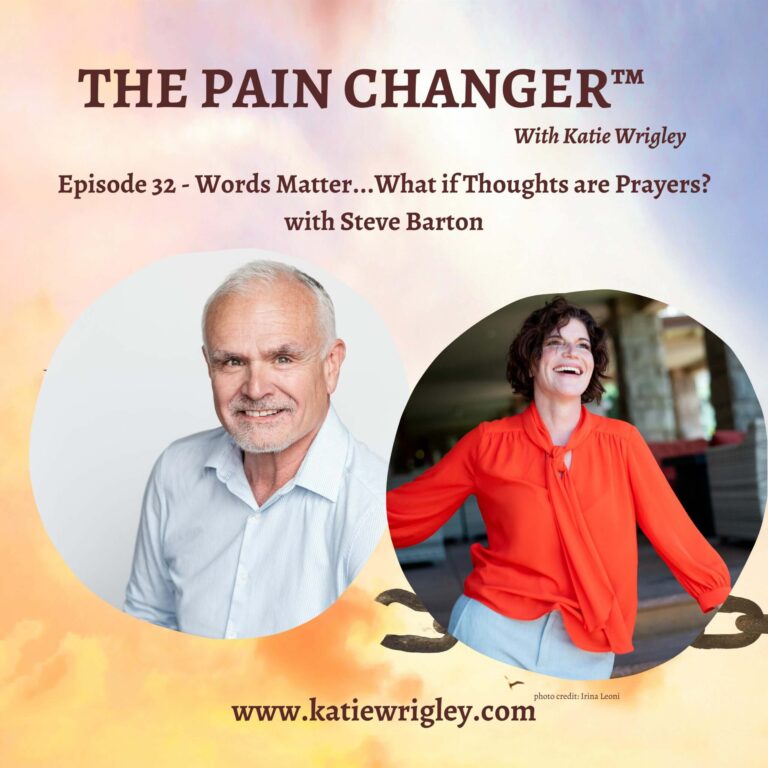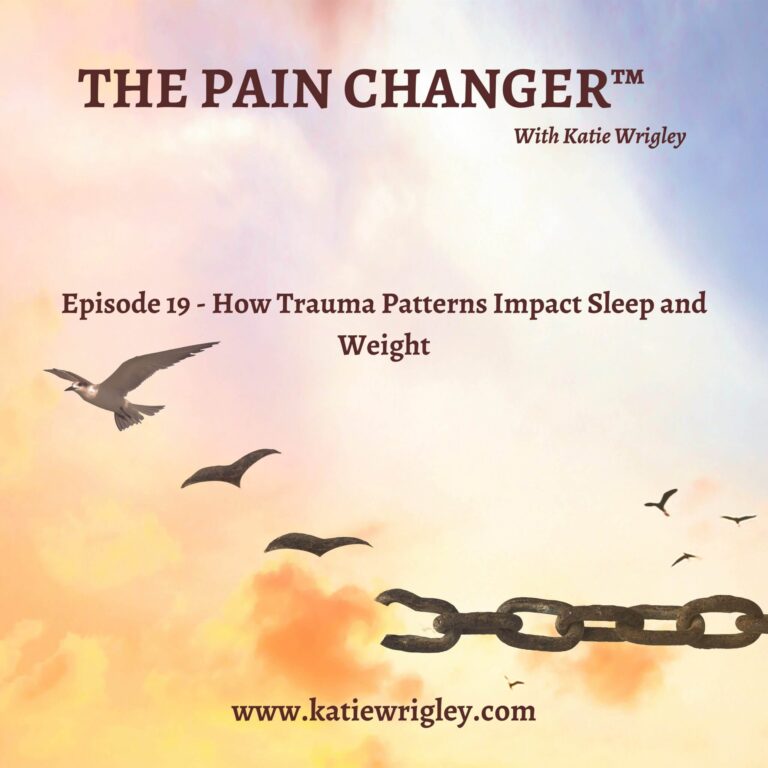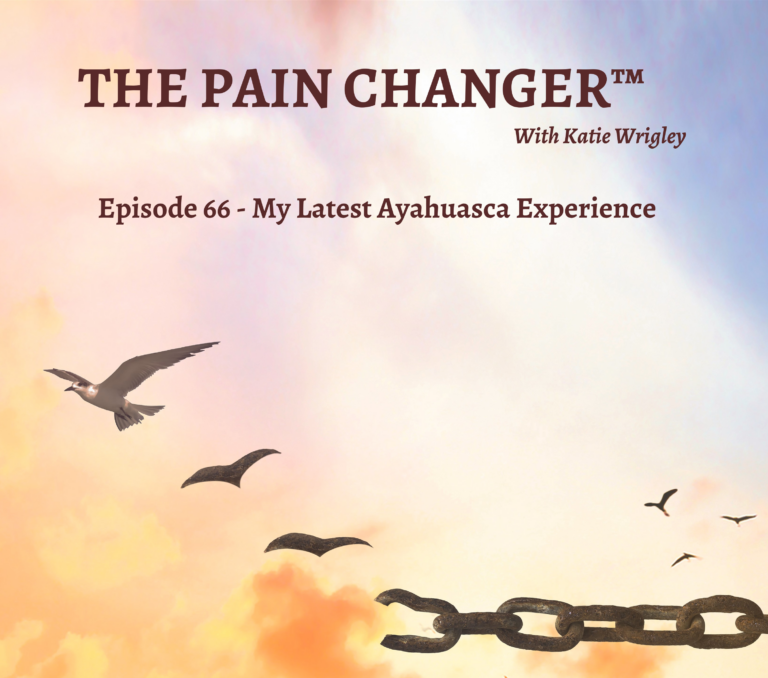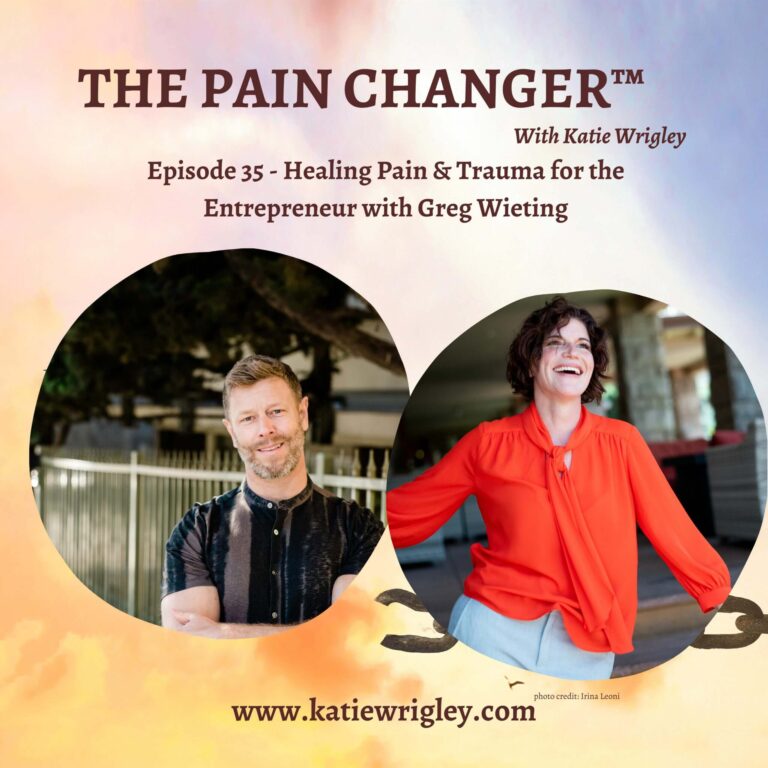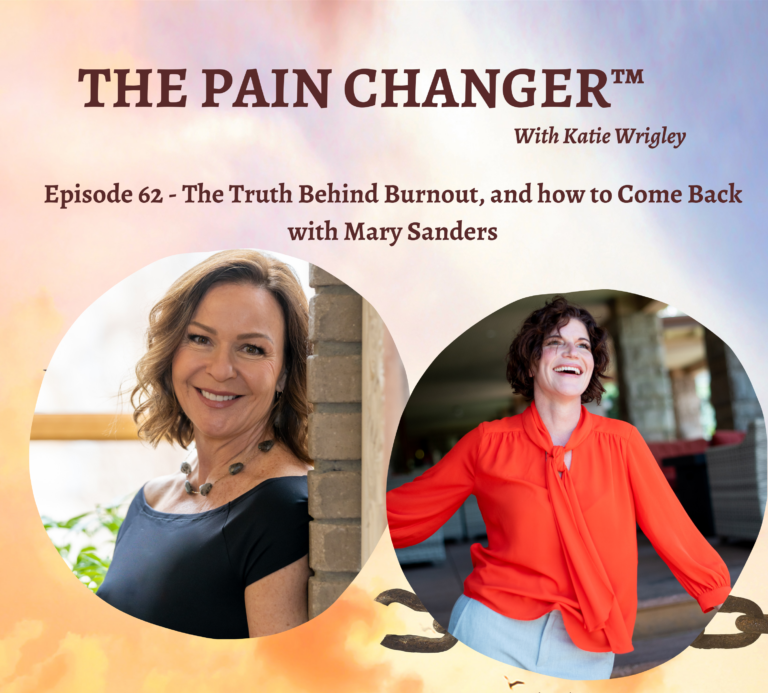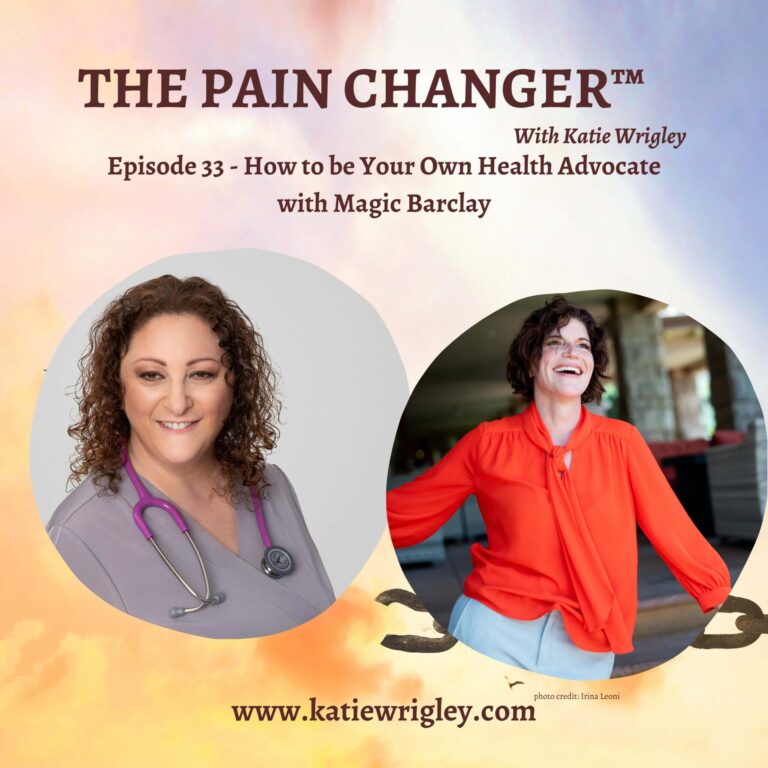Episode 5: Pain: It’s all in your head!
Transcript…
Pain is created inside your brain, which means its all in your head. This also means you have the power to change your brain and thus your experience of pain.
This is episode five of the Pain Changer Podcast – It’s all in your head. Have you ever felt like your doctor doesn’t believe you about your pain? Has anyone suggested that you may be imagining pain to be worse than it should be? I’m using air quotes just so you know. Join me today, as we will be discussing the fact that pain is in your head. That doesn’t mean it’s not real pain is real, and painted in your head. Welcome to the pain change your podcast where you learn insider tips and tricks to help you improve your pain levels. Without the nearly daily trips to the doctor or heavy pain meds. When you change your mind, you will change your experience with pain. Every week, the pain change your podcast will teach you new ways to tune into your body in order to change your mind. If you had to scrape yourself off the bed like you’re an undercooked pancake on an ungreased pan this morning. You’re in the right place. Here’s your host Katie Wrigley. If hearing my intro today pissed you off. Good. That means you’re paying attention. Now, let me assure you just because pain is in your head. That does not mean it’s not real. I believe you. Your pain is absolutely as real and as intense as you feel it is. And your pain is created in your brain. This episode is going to explain what I mean about that. What I mean, when I say that pain is in your head. I mean, that is where your body is making the decision that something hurts. This is actually really great news. Not that you hurt. To be clear, that part is not good news. That part sucks. And I’m so sorry that you hurt so much. But the fact that you hurt because your brain is telling you that you’re hurt. That is actually great news. Why you ask? Well, have you heard of neuroplasticity? In a nutshell, it’s your minds ability to change. Before I get into that though, let’s talk about how your body and brain come to the conclusion that something hurts, and what it means to experience chronic pain versus acute pain. You have about 45 miles of nerves throughout your body. And I used to joke that mine had a lot of road damage. Because they did those 45 miles or nerves are reporting back to the CEO of your body, AKA your brain. Those 45 miles of nerves are reporting back to the CEO of your body, otherwise known as your brain. Any place those nerves are picking up pain receptors, something your body creates, when you hurt yourself. Those pain receptors then travel back through your body on the peripheral nerves from wherever they were created, into your spinal cord and up to your brain reporting the pain. So this is what it looks like. When you hurt yourself, say you stub your toe or twist your ankle. Normally the pain is sudden and intense and it gets your attention. So you stop doing whatever caused you pain. Pain is there to protect you. I know it doesn’t feel like that sometimes it feels like punishment. Normally, that pain will go and normally, that pain will go away in a few days, few weeks, maybe a month or two, depending on the severity of the injury. That’s what we call acute pain, it’s sudden and can be very intense. With chronic pain, those receptors keep firing over and over again and they don’t get downtime. This becomes a loop between the brain and the body. And when that loop or pattern runs without interruption, we have chronic pain which has at least three to six months of uninterrupted pain. As that loop continues to run. Pain can feel even worse when your body has not incurred more damage. Sometimes even a minor injury winds up resulting in chronic pain. The pain is still felt days, weeks or months after the injury is healed. At that point, after months of experiencing pain, physical changes occur in the brain. One study I found and you can Google this to show that there was an 11% reduction in gray matter in the brain of someone with chronic pain versus the brain of someone who was not in pain. Gray Matter is the area of your brain that’s responsible for ideas, movement and emotions. That loss equates to 10 to 20 years of natural aging. Let that sink in. The brain of someone in chronic pain shows deterioration not normal Emily’s seen for another 10 to 20 years. So yes, it’s not your imagination that you feel old when you’re in pain. You’ll also look older. I certainly did. Are you still with me on how pain is sensed by your body and created within your mind? Good. Let’s keep going to look at some other examples. Sometimes when you’re chronically hurting, your body will kick up its level of sensitivity. One such condition that I got to experience myself is called centralized sensitization lab. That is such a mouthful. I stumble over it almost every time I say it. So let’s just call it central pain syndrome. So I’m not stumbling every few words. When you have central pain syndrome, your body becomes hypersensitive to pain. When I was initially diagnosed with this, I read that it was a psychological condition. I immediately glared at my computer and told it to go fuck itself as I looked at bruises on my arms that shouldn’t have been there, psychological my ass. Now as I refresh my memory on the condition via Google, it shows as both a nervous system disorder and a psychological disorder, and a appears there is debate in defining it. The one thing that no one is debating is that it means your body is more sensitive to pain when you’re in that state. People with fibromyalgia are perspective that people with fibromyalgia are suspected to have this condition as well, creating hypersensitivity. When my body was in this state, I can barely be touched, and that sucked, because I love hugs. If I went to go get my eyebrows waxed, I would bleed, which hadn’t happened in over a decade, if my puppy bumped me if my puppy but if my puppy bumped me, I got bruised. If a cat scratched my arm, my arm would swell to two to three times what it used to be. At this point, your brain and nervous system are so overloaded from the constant barrage of pain receptors. Energy is very low, and you probably have little to no ability to focus, your body may be chronically inflamed as well. Your subconscious is in a state of fight or flight. When you hurt, your first response is to want to lower the pain, right? So you’ll grab ice or maybe an NSAID or Tylenol to get some relief. Research is starting to show that by taking medicine for pain, it doesn’t actually help you heal at all. Research is starting to show that taking medicine for pain doesn’t actually help you heal at all. In fact, it may add to your healing time, ice and heat can help as long as they’re used properly. If you use it too much, you may hurt the tissue with cold or cook your skin with heat. I’ve done both myself, I’ve cooked my lower back. And I’ve kept heat or my knees way too long to a point they were still cold an hour after removing the ice pack. It’s so understandable that you tried to give yourself relief anyone would, especially when the pain has been going on for long as it has with you. You just want a break. In fact, you need a break. The tendency with medication is to feel like it stops working overtime. So you take more and more. This is a dangerous pattern that can lead to dependence on strong medication. What else can be done though? Now, this is where we can use neuroplasticity to shift. Now, this is where we can use neuroplasticity to shift your perception. Now, this is where you can use neuroplasticity to shift your perception. Neuroplasticity in cases is a new term for you is basically your brain’s ability to reorder neurons and neuro pathways through growth and reorganization. This can include creating an entirely new neural pathway or simply reordering the one that is already there. What this means is that we can change our perception. What this means is you can change your perception of pain, so you experience it much less intentionally. What this means is you can change your perception of pain. So you experience it much less intensely and potentially diminish the pain levels so much that you feel like you’re pain-free again. Smile along with me. This is great news. The first thing I want to mention before you dive into this idea of changing your brain and that’s your experience with pain. If you do nothing different then nothing will change. If you want to change your pain state, then you You will want to change what you are doing. As with any change, do it slowly 1% Or one millimeter at a time. Try something new for three weeks at a time before you add anything else. 21 days makes a habit, hence why I recommend that pace to start to utilize neuroplasticity, it will take practice and it will require some work on your part. You may be groaning and shaking your head feeling like you can’t I get it. I had the same reaction. I wish I could do it for you. But it doesn’t work that way. I was the only one who could change my pain state. And you are the only one who could change yours. What else you’re going to do with your day. If you’re staring down the long barrel of a painful life, that is denting your happiness. Why not start to demote? If you’re staring down the long barrel of a pain-filled life, that is denting your happiness. Why not start to devote just a small part of your day to doing something different? So you can turret motherfucker. If you’re staring down the long barrel of a painful life, that is denting your happiness. Why not start to devote just a small part of your day to doing something different? So you can start to experience the change you want. Why wouldn’t you want to try something that can provide you with the relief you’re desperate to have to change your pain state. To change your pain state, let’s first understand the brain states. There are three main types of brainwaves. beta waves, which are when you are awake and alert, you are fully conscious and not really accessing your subconscious mind, which means you’re usually blindly following any patterns it’s giving you. Alpha waves are when you’re relaxed, and alpha waves give you access to your subconscious mind while you are still fully conscious and awake. Theta Waves are what we experienced as we drift off to sleep when we are the most relaxed. So some of the ways that you can start to change your pain state meditation. Meditation allows your brain to go into those alpha waves. Your brain goes into alpha waves in a light meditation. And it can go into theta waves with a deep meditation, but you may also be falling asleep at that point too. The more you meditate, the more you tell your brain and nervous system that they can relax and stand down. meditation helps you connect to your body. And to start to understand it better to breathwork is another great way to change pain. There are a lot of different types out there and I invite you to research those on your own. Some will raise your energy, some will really relax you others can help induce what feels like a deep spiritual state. Meditation and breath work will both help especially if there’s an element of trauma or PTSD attached to your pain. They’re slower methods though, and they require more lather, rinse repeat before you’ll feel the difference. You can start to track the biggest influencers of your pain by journaling daily. You can even do a video journaling. If writing seems too hard to do right now. Trust me when I say that you’ll be glad you documented how you are now. Because when you feel better, you’ll be amazed by yourself and how far you’ve come. I know that may seem weird to you, but give it a shot. I’m really glad I documented my former disability. Even if it’s still really hard for me to see myself in that state. I’m glad I did it. I invite you to do this for yourself to take a selfie. Make a video journal document how you are right now. Start to note where your activities were, how you’re feeling, who you’re around, and what you noticed with your pain levels. It won’t take long to start to see patterns emerge. Once you see those patterns, now you have something to focus on that you can shift in another direction. For me, one of the first patterns I noticed was at the level of drama and chaos in my house at the time. Those were preventing me from healing. One night about four to five weeks after my knee replacement. The guy that I had been dating at the time started screaming at me one night. One night, about 45 weeks after my knee replacement, the guy had been dating at the time started screaming at me and I temporarily lost motor function in my arms. It was terrifying. One night, about four to five weeks after my knee replacement. The guy I had been dating at the time started screaming at me at the top of his lungs and I temporarily lost motor function in my arms. It was terrifying. I tried to get my own seems to lift so I could text my coach back and tell her that I was physically fine. But mentally, I was nowhere close to Okay. And I couldn’t lift my arms no matter how hard I tried. It took about 10 minutes until I calmed down enough to use my arms again. That was my breaking point. I asked him to leave the next day and he did, which is when I really felt how badly my body needed rest and peaceful silence. Something I had had very little of. Something I had had very little of while he had been living with me, just a piece of his exit, combined with a meditation focus on forgiveness and switching to using loving words. Something I had had very little of while he had been living with me just the peace of his exit, combined with a meditation focused on forgiveness, and me switching to loving words to use for my body. I started to heal a lot faster. I’m still unraveling all the damage I did myself physically, mentally and emotionally before I turned my life around, layer by layer. I’m feeling better as I heal these past incidents. While I still meditate fairly regularly, cognitive movement is my go to modality to help me heal my brain in my body. Affirmations are another way to help change your mind. In order to work an affirmation needs to resonate with you and you want to put it somewhere you’ll see it several times a day so you can read it out loud to yourself. Since starting cognitive movement, I haven’t had too many affirmations. One that is permanent for me and I will always use since I’m the type A and tend to overload My schedule is there is enough time when I prioritize. It’s true and helps keep me accountable. Some of the affirmations I used when I was disabled are as follows. Chronic doesn’t have to mean permanent, which I have since trademarked and is the slogan for my company now. Another one I used or tried. Pain is an illusion. That’s what I borrowed from Eckhart Tolle a and I’ll be honest, that one didn’t help too much. My brain didn’t buy it, but I kept it up for a few months. I also used you can heal yourself with your mind and you can accept the diagnosis without accepting the prognosis. Feel free to use any of those that you would like. Just note the trademark on my favorite affirmation. Cogno movement is the fastest way I found for creating or rerouting neural pathways so far. For me, it was faster than a combination of breath, work, meditation and affirmations all at once. Plus, I get the added bonus that I don’t have to feel all the emotions that I don’t really enjoy feeling for very long before they’re gone. You can approach a pain state from a few different directions to you can approach a pain state from a few different directions too. You can focus on the physical sensation and explore how you feel about that sensation. You can focus on the emotions that you feel are linked. For instance, lower back pain can be linked to financial scarcity. The focus would be on financial scarcity, which you are feeling in your lower back. You can also focus on how you feel about the pain such as frustrated, irritated, drained, etc. Even if you feel it intensely elsewhere in the body, the tendency from doing cognitive movement is to lessen the sensation everywhere to felt within the body. Even with the focus on only one area. If you’re like me, though, you might like to deny that there is an emotional component. And with cognitive movement, you don’t actually have to feel that emotion for very long. Even knowing this, it took me working through some resistance to do sessions I knew would help. Once I realized that it was my choice to continue to once I realized it was my choice to continue to suffer. Or I could put my big girl panties on again and deal with it. I was able to let go of that resistance and just dive into it. Sometimes you’ll still hear me say I set a pitch. When I realized there’s more there to pack it on he’ll sometimes you’ll still hear me say son of a bitch. When I realized there’s more there to unpack and he’ll sometimes the amount of layers with an issue is totally shocking. But at this point, I’ll keep going through layers to unpack and improve my life. In my experience, it’s always worth it. Always. changes from a cognitive movement session will continue for six weeks after a session When you can layer it by doing weekly sessions, or, even more frequently, with quick five-minute daily sessions, you can really make a big difference in your neurology. And therefore in your entire life. Creativity goes up, as does energy. Relationships that used to be a thorn in your side are suddenly amicable again, relationships that used to be a thorn in your side, are suddenly amicable again, and you may not understand why. Those are just a few outcomes from cognitive movement, in addition to changing your perception of pain. I hope this has helped you get a better understanding of how pain is created in your brain, and how you can now do something, in fact, several things to help shift that pain state, it’s so understandable that you may be out of hope, and exhausted from everything you’ve already tried. But if any of what I said today resonates with you, or you see, you could potentially try something like I mentioned, like meditation or cognitive movement, then I really hope you take action to try. Thank you, as always for joining me today. If you’re already seeing how I can directly help you raise your quality of life by shifting your perception of pain, then I invite you to go to Katie Wrigley com slash cognitive movement and click Start here to book your sessions with me. Thank you, as always, for joining me today. And until next week, never forget that chronic doesn’t have to mean permanent. As you’ve been listening today, did you notice anything happening in your body that would point to resistance to try anything I suggested? Is there almost a fear of what it would be like not to have pain anymore? Like you’re almost afraid to imagine what it would look like for you? Or who will you be if pain is no longer a part of who you are? Join us next week to find out more about that.



